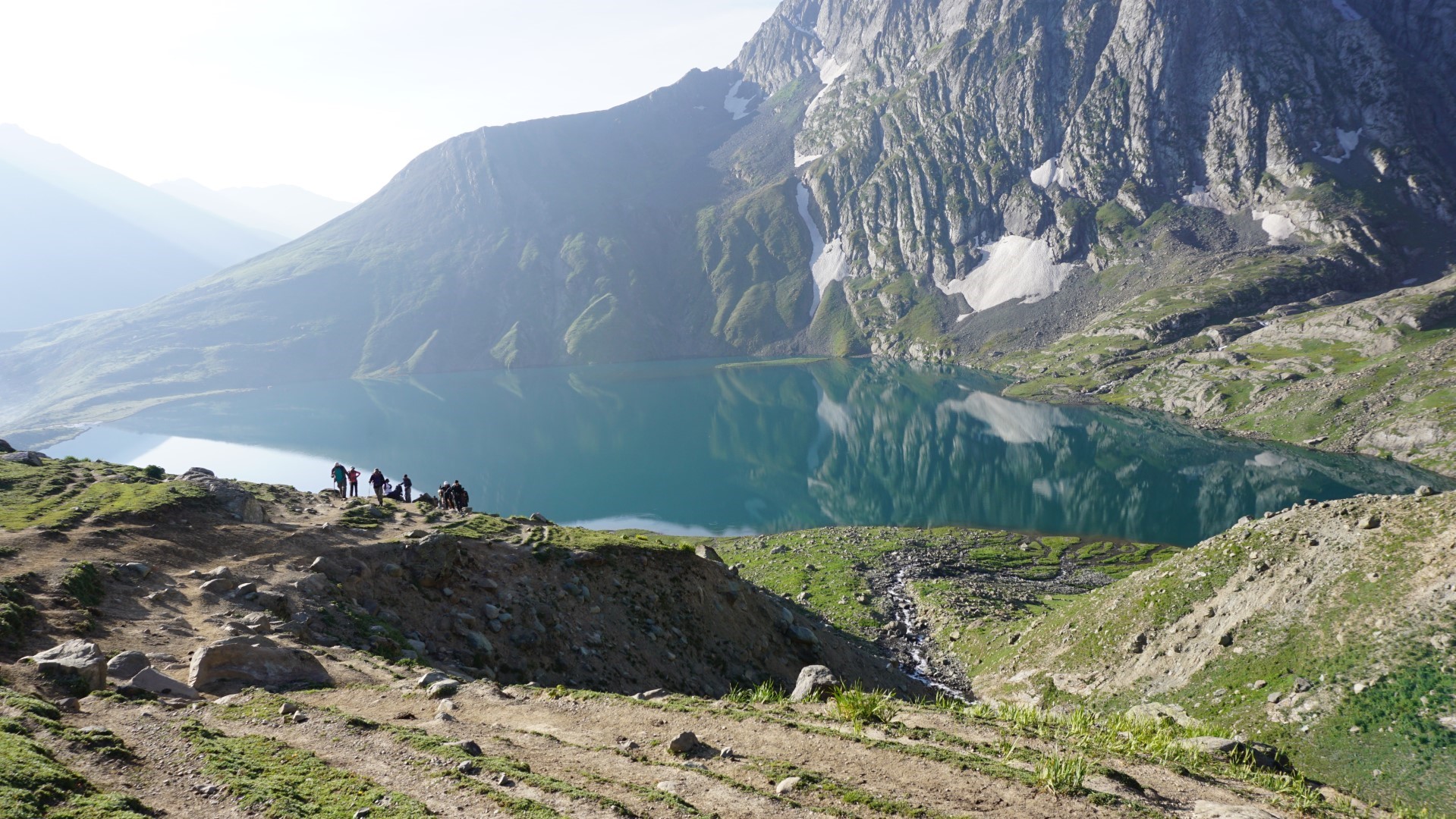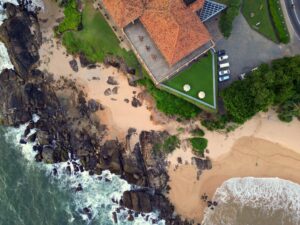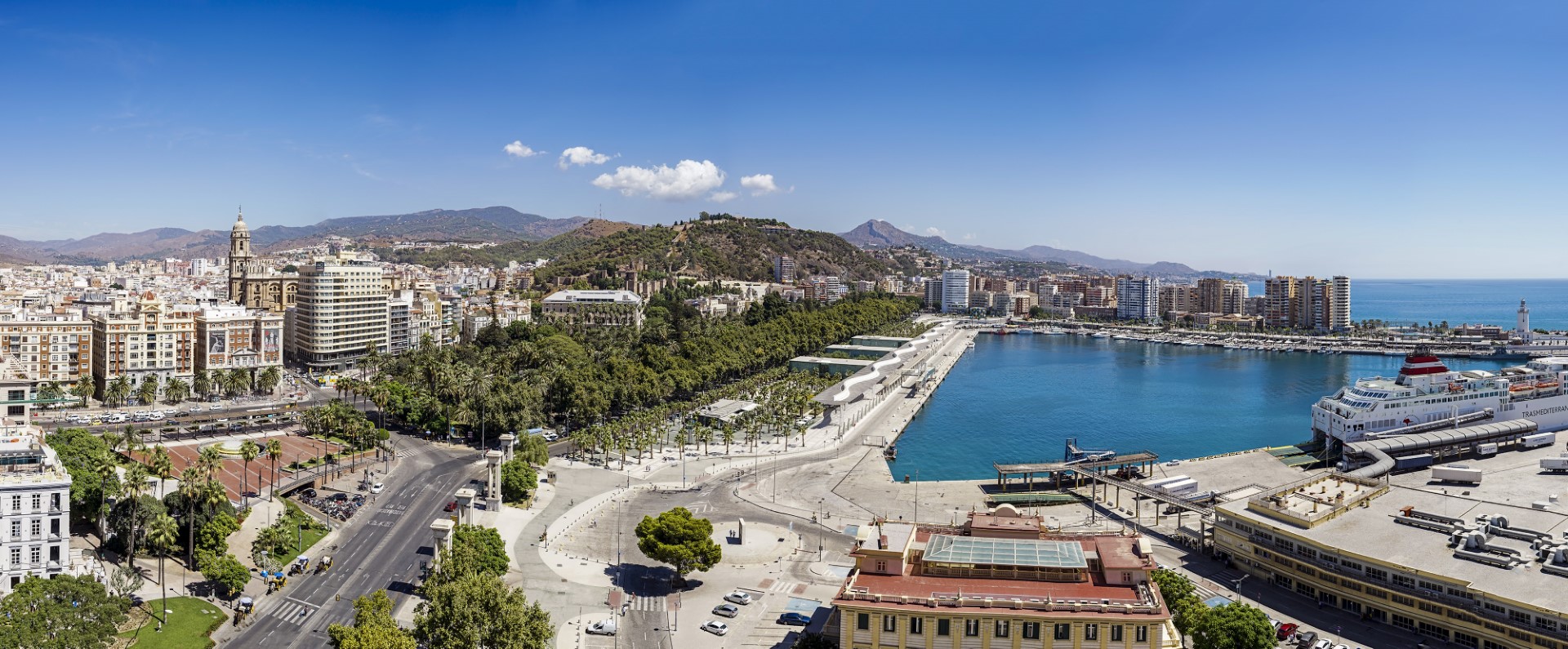
A Visit to Málaga: Spain’s City of Museums
Spain is a fascinating country to explore, but undoubtedly the most enthralling and exciting region is the southernmost province of Andalucía. Almost all international visitors to Andalucía land at Málaga airport and most invariably and inevitably head straight to sun themselves on the beaches of the Costa Del Sol.
This is a pity because Málaga, whose history dates back 2,800 years, making it one of Europe’s oldest inhabited cities, has a great deal to offer. Long overshadowed by Seville, the capital of Andalucía, Málaga has enjoyed a renaissance in recent times due to the profusion of interesting new museums, amazing tapas bars along the Calle Larios, and a new harbourside promenade, Muelle Uno, which offers a unique dining and shopping experience by the sea.
The turnaround in Málaga’s fortunes was sparked by the opening of the new Museo Picasso Málaga in the restored Palacio de Buenavista in October 2003. Picasso was born in Málaga and the Museo Picasso is the most visited museum in Andalucía, with the entry queues (12 euros per head) snaking around the palace. However, it is only a modest collection of 285 works of one of Spain’s greatest artists and you won’t find any of his masterpieces here. Personally, I was underwhelmed by my visit, and if you are a Picasso fan, then the collections in Barcelona and Madrid would be of far greater interest.
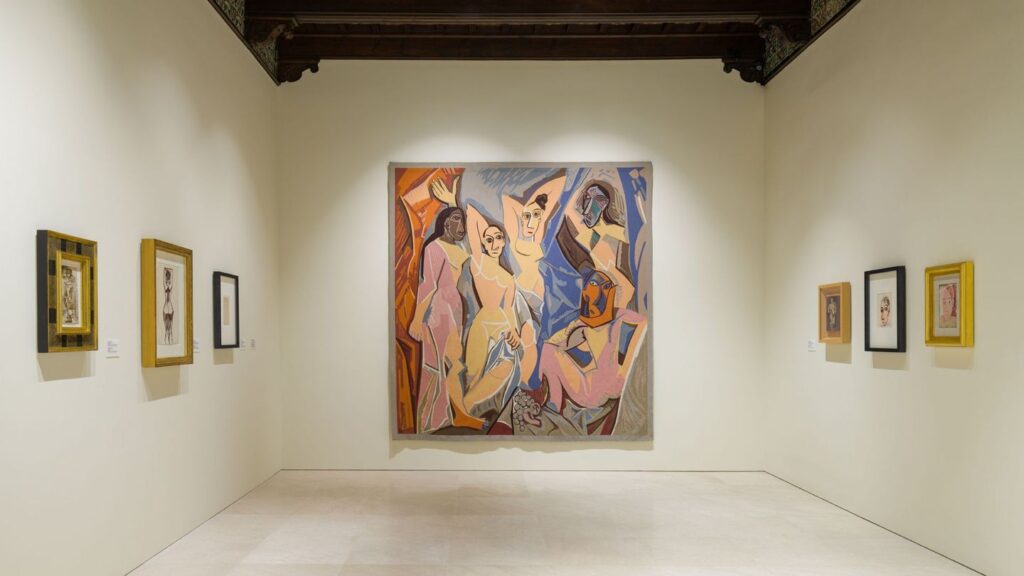

The museum that really charmed and delighted me was the Museo Carmen Thyssen Málaga, which opened in March 2011. The permanent collection consists of 230 works from the personal collection of the founder, mainly by nineteenth-century Spanish artists with a focus on Andalucía. The most famous painters whose works feature in this collection are Francisco de Zurbarán, Darío de Regoyos, Ignacio Zuloaga, and Julio Romero de Torres, whose works were much in demand by their wealthy patrons in the salons of Paris and London. These buyers had a fascination for the exotic and the unknown which heavily influenced how these artists interpreted the urban and natural landscape and traditional customs of their homeland. The museum (10 euros entry + I recommend you get the excellent audio guide) receives a fraction of the visitors that throng its better-known Picasso cousin, but is a much better bet for the quality of the experience.
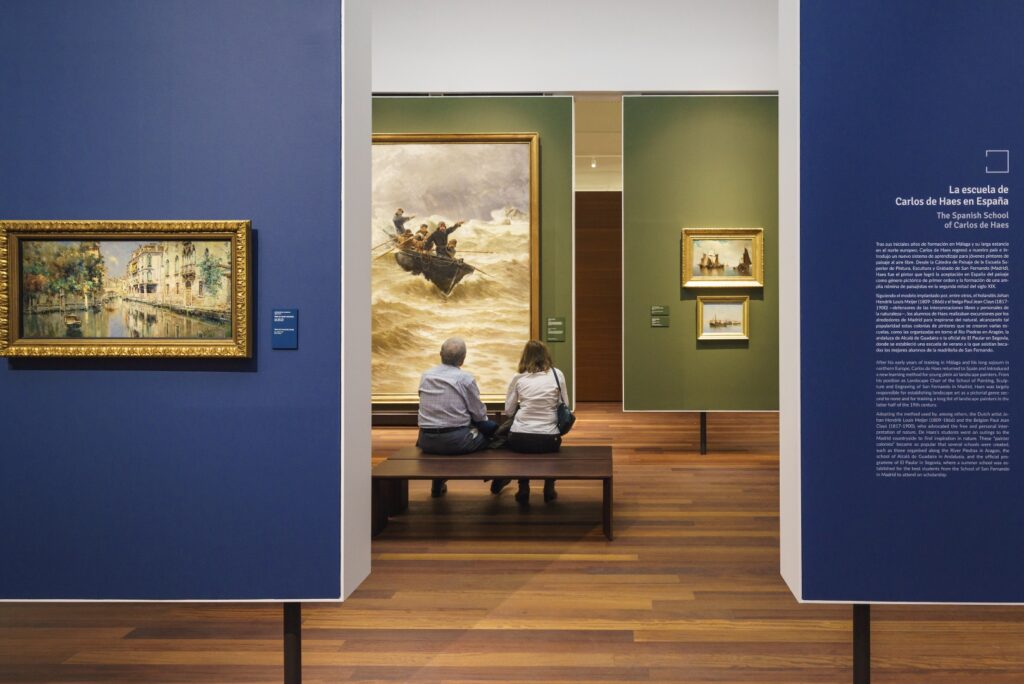

Another recent addition to Málaga’s cultural landscape is the Museo de Málaga, which brings together the fine arts and archaeology collections that used to reside in the former provincial museums. Altogether there are 2,000 works of art and 15,000 archaeological relics that are displayed in their new home in the Palacio de la Aduana (Customs House of Málaga), a neoclassical building that was opened as the Museo de Málaga in December 2016. At 1.50 euros for the entry, you won’t find a better cultural bargain in Málaga. In the archaeology section, you can retrace the history of Málaga and see the remains of the various civilizations that followed one after another here (Phoenicians, Romans, Visigoths, and Moors). The fine arts section has the best collection of paintings by well-known Malagan artists from the nineteenth century such as Antonio Muñoz Degrain, José Moreno Carbonero, Enrique Simonet, and Bernardo Ferrándiz Bádenes.
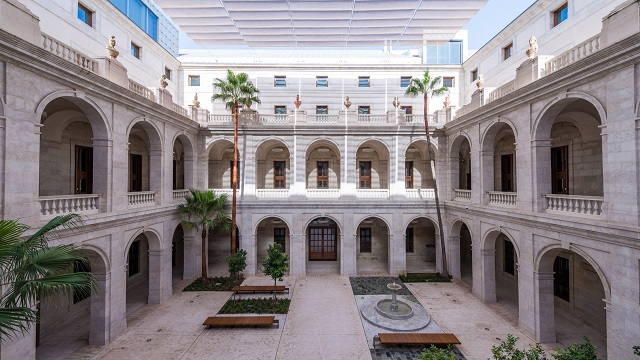

Málaga’s amazing and unique skyline juxtaposes its two most famous Moorish monuments, the Alcazaba (fortified palace in Arabic) and the Castillo de Gibralfaro at the top of Monte Gibralfaro, which overlooks the city.
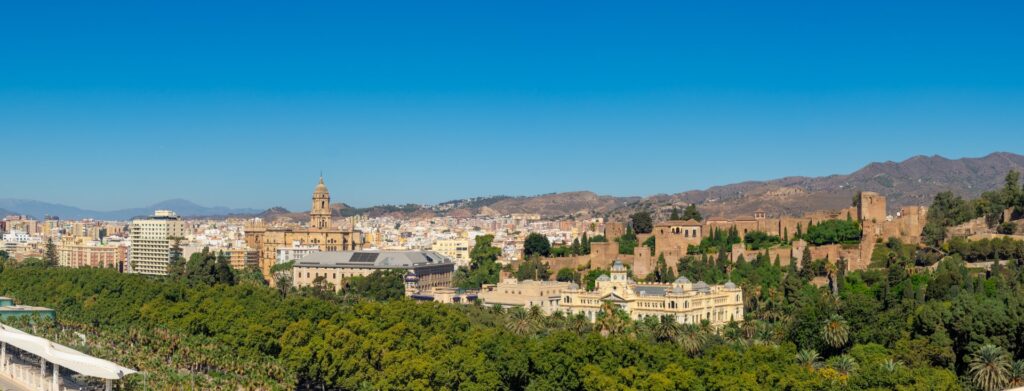

The Alcazaba came first. It was built during the reign of Abd al-Rahman I, the first emir of Córdoba, around AD 756–780. It was originally meant as a defence against pirates raiding from the Mediterranean. You could start your tour here, climbing gradually and traversing through several defensive Moorish gates and admiring the spectacular views of the city. Once you reach the sanctum sanctorum of the interior palace (built by the Nasrid dynasty), you can marvel at the serene beauty of the three major courtyards, the landscaped gardens with fountains, the tall Moorish arches, the marble columns and balconies, and the tiled walls and ceilings.
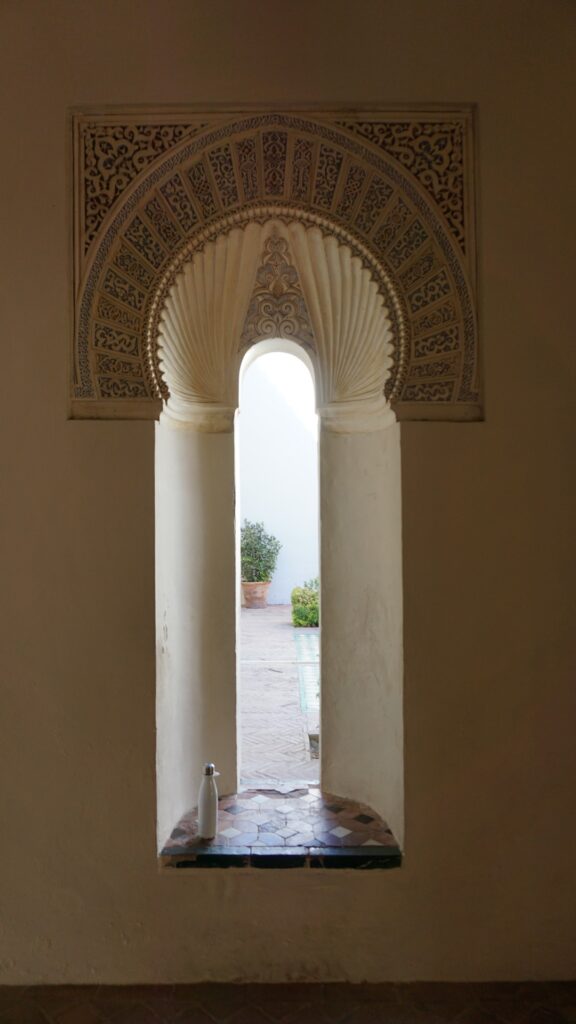

Make your way down and out of the Alcazaba and take the 35 number bus to the top of Monte Gibralfaro (the rock of the lighthouse in Arabic) to begin your tour of Gibralfaro Castle. This imposing monument was built in AD 929 by Abd al-Rahman III, the founder and first caliph of the Caliphate of Córdoba, on a former Phoenician enclosure and lighthouse. Centuries later, it was connected to the Alcazaba by means of the coracha (a double wall) which provided an extra layer of defence to the city. The ramparts are well restored, rising majestically from dense forests of pine and eucalyptus, and you can walk all the way around them, enjoying the most stunning 360-degree views of Málaga, the sea, and the mountains.
Inside Gibralfaro Castle, the main thing to see is the small military museum housed in a building that has variously served as a church and a gunpowder store.
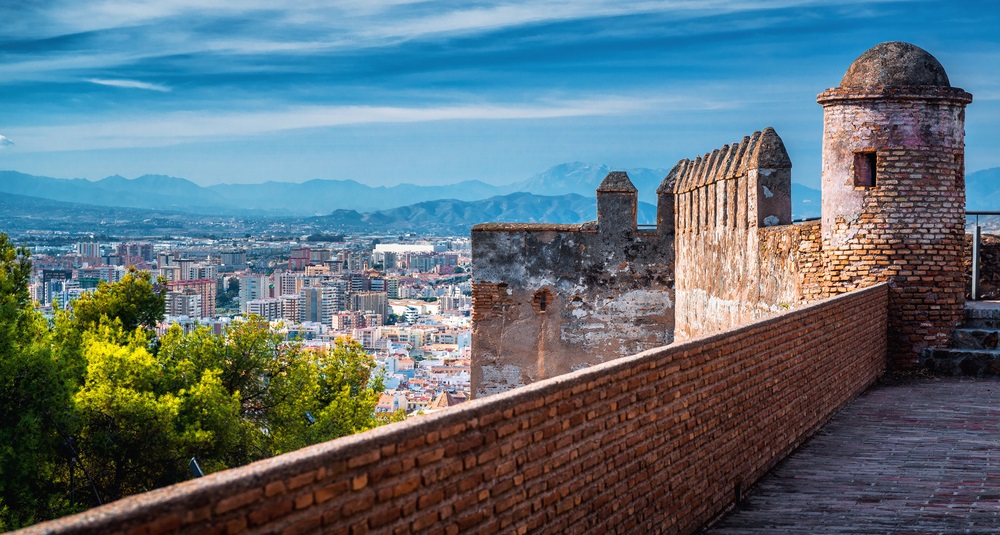

Finish your tour by strolling down to the city via Paseo de Don Juan Temboury, a shaded cobbled path that follows the fortress’s outer wall before winding down through the pine trees to a plaza below.
As you descend the Coracha ridge, you will see to your left an ancient stone amphitheatre among the crowded apartment buildings of Málaga. This is the El Teatro Romano (Roman Theatre), the oldest monument in the city, built early in the first century AD during the reign of Emperor Augustus. The theatre remained in use till the third century AD after which it lay in ruins until the Moors arrived and plundered it for the stone to build the Alcazaba – you can see many Roman capitals and columns in the fortress. The ruins were then discovered in 1951 when excavations were started to build a new cultural centre, Casa de la Cultura, in Málaga. After much controversy, it was finally decided to restore the theatre and relocate the cultural centre. Today, the theatre stands in its original glory in three parts: the cavea or stands; the orchestra pit or the semicircular area between the stands and the stage; and the proscenium or stage, and is free for you to visit
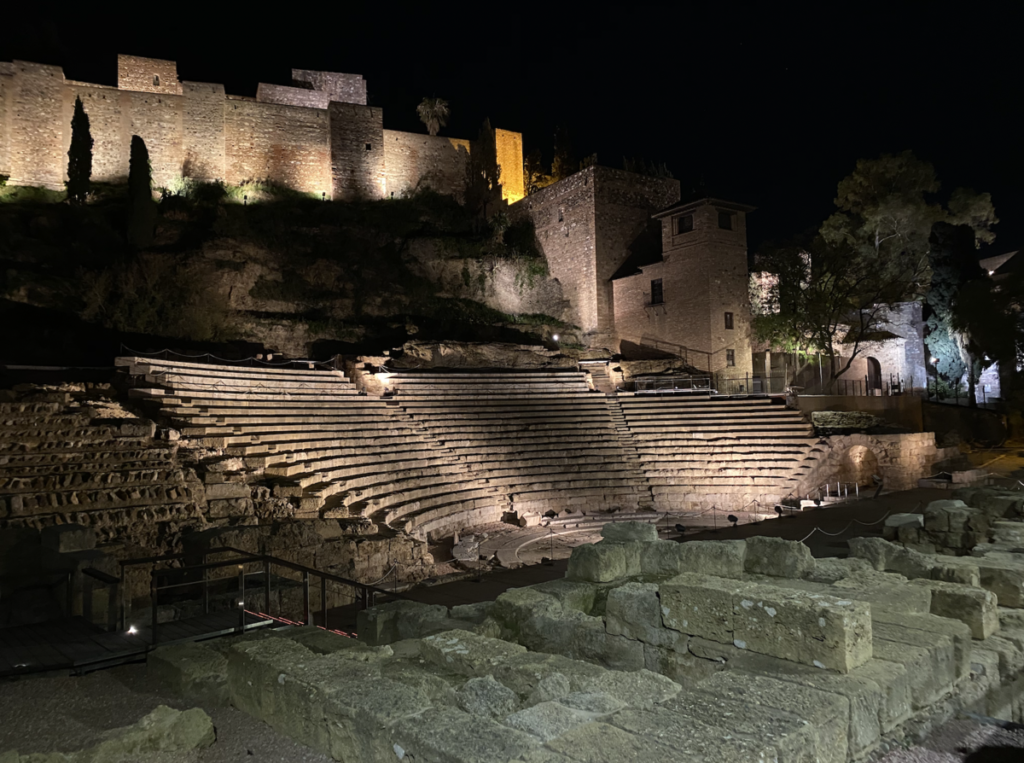

Since its opening in 1971, El Teatro Romano has been used in the summer for open-air musical and cultural performances and can seat up to 220 spectators.
Málaga’s many museums are the best part of the city, offering visitors an excellent introduction to the rich and diverse history and culture of Andalucía.
![]()
![]()

